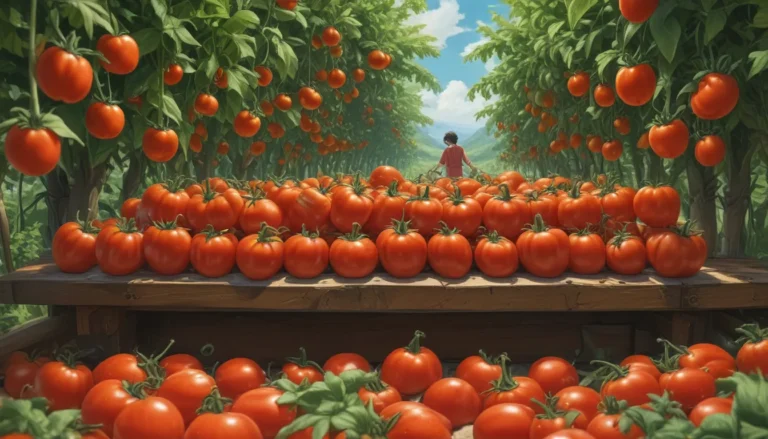Creating Fruit Tree Guilds: Your Comprehensive Guide

Welcome gardeners, to the wonderful world of fruit tree guilds! If you’re looking to enhance the health and productivity of your garden while creating a beautiful ecosystem in your backyard, then you’re in the right place. In this detailed article, we will delve into the fascinating concept of fruit tree guilds, explore the essential components of a guild, and provide you with all the information you need to start your own cherry tree guild.
Understanding Fruit Tree Guilds
So, what exactly is a fruit tree guild? In simple terms, a tree guild involves planting a central tree and surrounding it with a variety of other plant species that work together to support the tree’s health and overall well-being. This concept is deeply rooted in permaculture, a design approach that focuses on observing natural ecosystems to create sustainable and integrated systems.
The beauty of creating a fruit tree guild lies in mimicking the diversity and interconnectivity of natural plant communities, allowing different species to collaborate and thrive together. By incorporating guilds into your garden, you can improve yields, enhance pollination, reduce pests and diseases, conserve water, and create a harmonious and productive ecosystem.
Necessary Components of a Guild
Embarking on the journey of creating a tree guild is both easy and enjoyable. Let’s explore some essential components that are integral to a healthy and thriving guild:
1. Nitrogen Fixers
Nitrogen fixers play a vital role in a guild by facilitating the conversion of atmospheric nitrogen into a usable form for plant growth. Plants such as white clover, alfalfa, fava beans, and sweet peas are excellent choices for fixing nitrogen and providing other benefits like ground cover, pollinator attraction, and edible produce.
Incorporating nitrogen-fixing shrubs like Siberian pea shrub or goumi alongside your fruit tree can further enhance nutrient availability and soil health. Remember to choose plants that serve multiple functions to maximize the benefits within your guild.
2. Bring on the Pollinators
To ensure successful pollination and fruit set in your fruit tree guild, it’s essential to attract beneficial insects like bees, butterflies, and hoverflies. Planting flowering herbs such as daisies, lupines, chives, and fennel can create a pollinator-friendly environment and enhance your garden’s productivity.
Species like angelica, coriander, and clover can also attract lacewings and hoverflies that help control pests and improve overall plant health.
3. Repel Pests
In addition to attracting beneficial insects, certain plants can act as natural pest deterrents in your guild. Herbs like peppermint, lemon balm, and nasturtiums are known for their pest-repelling properties and can help protect your fruit tree from common garden pests.
For larger herbivores like deer and rabbits, planting garlic or daffodils around the guild’s perimeter can serve as a physical barrier and deter unwanted visitors.
4. Soil Builders
Soil building is crucial for maintaining healthy and fertile soil in your guild. Plants with large leaves or dense foliage, such as rhubarb, comfrey, borage, and clover, contribute organic matter and improve soil structure.
These plants can be cut to provide biomass for composting or mulching, adding nutrients back to the soil and promoting soil health in the long run.
Guild Design Tips
Creating a well-balanced and functional guild requires thoughtful planning and design. Consider the following tips to optimize the layout and composition of your fruit tree guild:
- Layering: Mimic a natural forest ecosystem by incorporating plants of varying heights and habits. Surround your central fruit tree with smaller shrubs, ground covers, and herbaceous plants to create a diverse and productive guild.
- Plant Selection: Choose plant species that complement each other and fulfill multiple roles within the guild. Incorporate a mix of nitrogen fixers, pollinator attractors, pest deterrents, and soil builders to create a synergistic and resilient ecosystem.
- Creativity: Don’t be afraid to get creative with your guild design. Explore innovative additions like small ponds, rock nooks, or wildlife habitats to enhance biodiversity and ecosystem services in your garden.
By following these design principles and incorporating a diverse array of plant species, you can create a thriving and self-sustaining fruit tree guild that will enrich your garden and provide a bountiful harvest for years to come.
Innovative Problem-Solving with Permaculture
One of the hallmarks of permaculture is its emphasis on holistic problem-solving and ecosystem resilience. When challenges like pests, diseases, or nutrient deficiencies arise in your guild, instead of relying on chemical interventions, you can leverage the principles of permaculture to address these issues naturally.
By observing and understanding the interactions within your guild, you can identify solutions that promote balance and long-term sustainability. Whether it’s attracting beneficial insects to control pests or incorporating nutrient accumulators to improve soil fertility, permaculture offers a regenerative and environmentally friendly approach to garden management.
Cultivating Your Food Forest
As you gain experience in designing and creating fruit tree guilds, you can expand your efforts to cultivate a diverse and productive food forest in your backyard. By creating multiple guilds and integrating them into a cohesive garden ecosystem, you can enjoy a wealth of benefits, including food production, wildlife habitat, and aesthetic beauty.
Have you experimented with creating a tree guild in your garden? Share your stories, insights, and questions in the comments below. We’d love to hear about your experiences and help you navigate the world of sustainable gardening.
If you’re eager to explore more sustainable gardening techniques and expand your horticultural knowledge, check out these related articles for further inspiration:
- Mulching and Low Maintenance Gardening
- Organic Gardening 101: How to Get Started
- Exploring Rodale’s Ultimate Encyclopedia of Organic Gardening
In conclusion, fruit tree guilds offer a holistic and regenerative approach to gardening that enhances biodiversity, productivity, and environmental stewardship. By embracing the principles of permaculture and designing thoughtful guilds, you can create vibrant and resilient garden ecosystems that benefit your plants, pollinators, and the planet as a whole.
Happy gardening, and may your fruit tree guilds flourish and thrive in harmony with nature!





